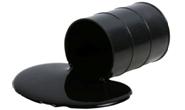Economy

Oil Prices Pressuring Texas Manufacturing
Written by Sandy Williams
December 28, 2015
The Texas Manufacturing Outlook Survey, conducted by the Dallas Fed, showed mixed results in December. The general business activity index plunged to -20.1 from -4.9 in November indicating a continued weakness in manufacturing. Analysts expected a decrease but only to around -6.0. In contrast, the index for production rose 8.2 points to 13.4 during the month.
Capacity utilization and shipments were positive for the fourth month, increasing to 7.8 and 7.5, respectively. Demand, as measured by the new orders index, fell for the fifth month to register -9.7, its lowest level since August and thirteenth month in contraction. Business conditions in the Texas region were attributed mainly to the negative economic impact from the struggling oil and gas sector.
Raw material prices declined to -8.6 while finished goods prices moved downward to -15.9. The wages and benefits index picked up to 20.4.
The future general business activity outlook dropped nine points to -1.4 while the index for future company outlook remained positive at 6.6, although falling from 16.2 in November.
Comments by the survey respondents are mixed but many show continued expectations of weak manufacturing activity and potentially lower selling prices. A few of the comments are reprinted below.
Fabricated Metal Product Manufacturing
• Much of our work comes from petrochemical and midstream owners and contractors. Although our backlog and December work have improved, capital expenditures going out are being reduced by our customers. We have increased some capital expenditures plans in the last quarter, anticipating passage of Section 179 extensions, but Congress’ waiting until year-end has been problematic since we cannot do anything significant without actual passage.
• New Environmental Protection Agency regulations on wood-burning furnaces set to take effect Jan. 1, 2016, have decreased orders and will continue to do so throughout the winter months.
• We first saw an increase of orders due to the end of the year, per usual. We are now seeing a continued surge of orders moving into the new year.
• The crude oil and natural gas market price downturn continues to negatively impact our industry and our company. Labor costs remain stable, but the producers of our primary raw material, hot rolled coil steel, have announced price increases effective first quarter of 2016, which the finished goods market will not absorb due to highly competitive pricing, thus further compressing our margins.
• The price of oil is really impacting our customer base and, in turn, purchases of our product. It is getting ugly.
Machinery Manufacturing
• There are lots of contradictions in the marketplace. As an offshore oil service provider, we have had very strong orders for the last five months, which is bizarre. We continue to read about doom and gloom, but the numbers haven’t borne that out. Living in Houston, I continue to see multiple out-of-state license plates on the freeways. People are continuing to pour into Houston; I just don’t know what they’re doing.
• The oil industry continues to suffer. We will end the year with less debt and more backlog because we have diversified out of the oil patch and out of Houston.
• Weak oil and natural gas prices are having a material adverse effect on our business.
• Several of our customers have slowed down for different reasons that do not appear to be related to a general slowdown in the economy.
Transportation Equipment Manufacturing
• Oil and gas work has significantly slowed. There is pressure from customers to lower prices further. We haven’t had any feedback provided from customers with regard to future expectations.
The Federal Reserve Bank of Dallas conducts the Texas Manufacturing Outlook Survey monthly to obtain a timely assessment of the state’s factory activity. Data were collected Dec. 14–22, and 116 Texas manufacturers responded to the survey. Firms are asked whether output, employment, orders, prices and other indicators increased, decreased or remained unchanged over the previous month. An index reading above zero indicates growth while a reading below zero indicates contraction.

Sandy Williams
Read more from Sandy WilliamsLatest in Economy

ISM: Manufacturing expansion loses steam after two months of growth
US manufacturing activity slowed in March after two straight months of expansion, according to supply executives contributing to the Institute for Supply Management (ISM)’s latest report.

Chicago Business Barometer rose to 16-month high in March
The Chicago Business Barometer increased for the third-consecutive month in March. Despite this, it still reflects contracting business conditions, as it has since December 2023.

Durable goods orders rise again in February
Transportation equipment led the increase, rising 1.5% to $98.3 billion.

Consumer confidence falls for fourth consecutive month
People remain concerned about inflation, trade policies, and tariffs.

Housing starts ticked up in February
Single-family starts last month hit a rate of 1.10 million, a month-over-month increase of 11.4%, census data shows.
